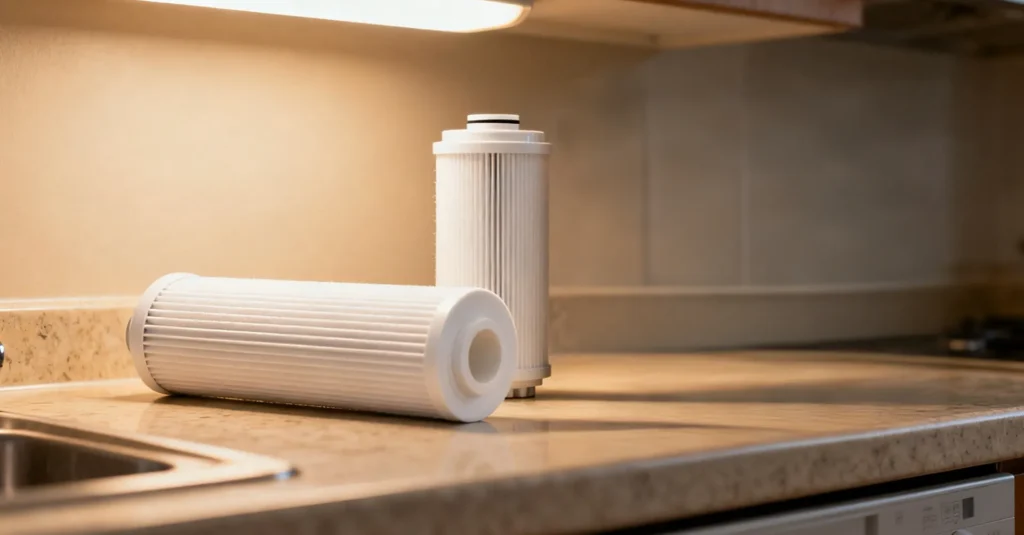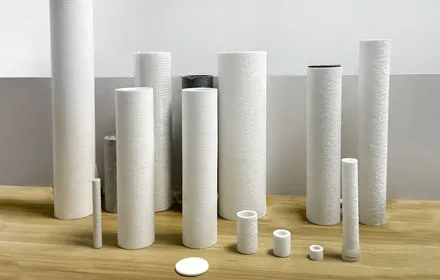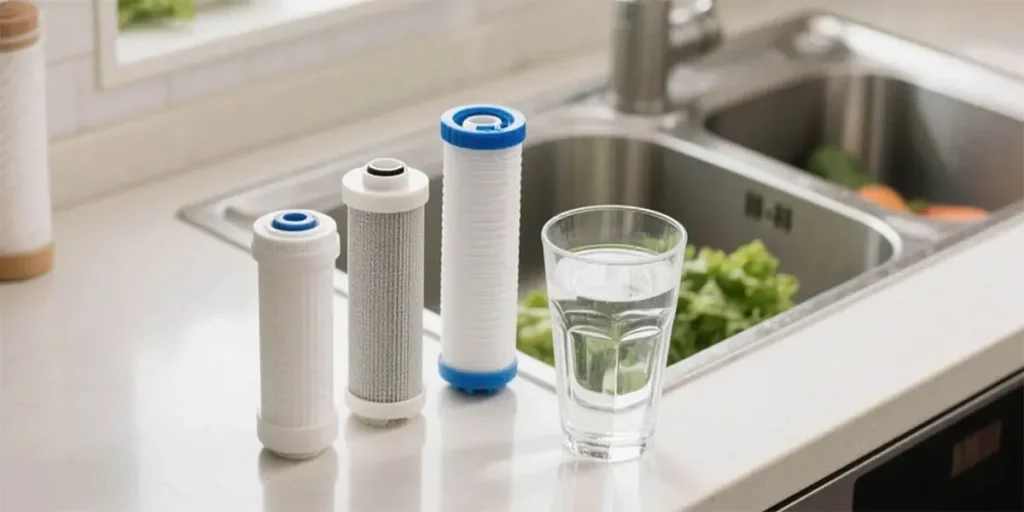When replacing the filter element of a water purifier, many users tend to fall into some common misconceptions. Here are some of them:
1. Focusing only on the price of the filter element
When choosing a water purifier filter, many consumers only consider the price, believing that a cheaper filter element can save money. However, cheap filter elements often lack quality and filtering performance, and may even have negative impacts on water quality. When choosing it, one should consider factors such as material and filtration accuracy, rather than just the price.
2. Changing the water purifier filter too frequently or too late
Some users, in an attempt to save money, postpone the replacement of the filter cartridge. However, how often the filter cartridge needs to be replaced depends on factors like water quality and usage frequency. If the replacement is delayed excessively, the impurities accumulated in the filter element may cause poor water flow, affect water quality, and even lead to the growth of bacteria. On the contrary, some users change the filter element too frequently, which not only wastes money but may not significantly improve water quality.
3. Misunderstanding the TDS Test as a Measure of Water Quality
There are approximately 106 indicators for measuring water quality in tap water, and TDS is just one of them. However, many users think that if the TDS test pen shows that the tap water is “qualified”, it means the water quality is truly satisfactory. In fact, qualified drinking water must meet comprehensive indicators such as turbidity, total bacterial count, microbial count, heavy metal concentration, and organic matter content. Using a TDS test pen to determine if the water quality is satisfactory is not rigorous.
4. Ignoring the filter element model and compatibility
The water purifier filters used in different brands or models of water purifiers have different types and specifications. Sometimes, users randomly purchase filter cartridges from other brands, thinking they can be used interchangeably. In fact, different cartridges have different filtering functions and size specifications. Using incompatible water purifier filters not only fails to provide effective filtering performance but may also damage the water purifier.

5. Not knowing the function and role of the filter element
Some users may not be clear about the specific function of each filter element. For example, some filter elements remove chlorine, while others remove heavy metals or organic substances. Ignoring this may lead to incorrect filter cartridge replacement, affecting water quality. Understanding the specific function of the filter element and choosing the appropriate one is the most effective way.
6. Ignoring the importance of water quality changes
Some users, when replacing the water purifier filter, ignore the significance of water quality changes. If the water quality in the household has changed (such as water source pollution or aging water pipes), different types of filter elements or increased filtration levels may be needed. If only the fixed replacement cycle is followed without considering water quality changes, the ideal water purification effect may not be achieved.
7. Believing the Filter Doesn’t Need Replacement if It’s Not Clogged
Some users have an attitude of “using it until it breaks down”, believing that as long as the water purifier can produce water normally, it does not need to be replaced, and it can be used indefinitely. In fact, the lifespan of the water purifier filter needs to be considered in terms of both filtration and adsorption. If there are fewer large particles of impurities in the water, the filter element may not get clogged for several years, but it may still accumulate a large amount of harmful substances, such as heavy metal ions and microorganisms. Take activated carbon as an example. As the amount of water filtered increases, the pollutants in the water will gradually fill the pores of the activated carbon, and when the pores of the filter element are filled, it will no longer have the ability to adsorb pollutants.
8. Ignoring the attenuation of the filtering effect
Some users have the intention to replace it, but when they remove it and find that the color of the filter element does not seem “very dirty”, they mistakenly think that it does not need to be replaced. This approach is not appropriate. The water in different regions contains different proportions of substances. If the water in the region contains more sediment, iron particles, etc., it that has been used for a long time may appear yellow (the color of sediment) or brown (the color of iron particles), giving the impression of being very dirty. However, if there are still a lot of heavy metal ions, calcium and magnesium ions, colloidal viruses, and microorganisms in the tap water of this area, since these substances have fine particles and are of a lighter color, they do not directly appear as yellow or brown like sand or rust, even though they are attached to the filter element in large quantities, the water filter cartridge will not look “very dirty”. However, at this time, it also needs to be replaced.
Over time, the filtering capacity of the filter element will gradually decline. Even if there is no obvious accumulation of dirt on the filter element, it will still reduce the filtering effect. Therefore, even if the appearance of the filter element does not change significantly, it should still be replaced regularly to ensure that the water quality remains at a safe level.
9. Failure to install the filter cartridge according to the instructions
Many users do not follow the steps in the water purifier’s instructions when replacing the filter element. Incorrect installation not only affects the effect of the water purifier filter, but also may cause the water purifier to malfunction, and even pose a threat to the safety of household water use.
10. Cleaning the filter element to extend its service life
Some users try to extend the service life of the filter cartridge by cleaning or regenerating it. Although some filter elements are designed for cleaning, most filter elements are disposable. Cleaning may not restore their original filtering performance, and even may cause secondary pollution.
In conclusion, replacing the filter element is a crucial step in ensuring water quality. Only by understanding the function, lifespan, and correct replacement cycle of the filter element can one effectively guarantee the cleanliness and health of the water.

